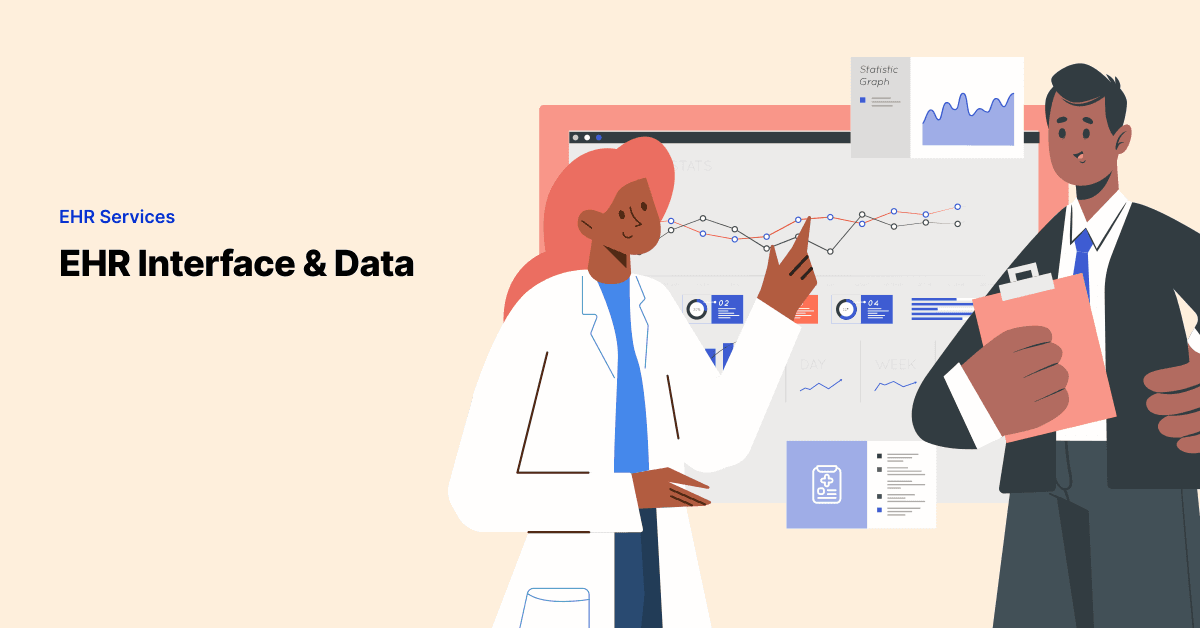
3 Considerations for Healthcare Organizations Going Through M and A Before Archiving an EHR
EHR or Electronic Health Records are being implemented increasingly in health organizations across several …

Initiating a healthcare data archival project requires thorough planning and the strategic formation of a skilled team. This endeavor necessitates not only technical expertise but also a profound comprehension of the distinctive challenges associated with healthcare data. It is crucial to select individuals whose abilities seamlessly align with the project's objectives.
From data engineers versed in the nuances of healthcare databases to information security specialists safeguarding sensitive patient information, each team member plays a pivotal role in ensuring the success and integrity of the archival project.The composition of your team, even when some members may not be directly engaged in the project, plays a crucial role in determining the project's ultimate success. In this blog post we cover the nuances of assembling your team for a healthcare data archival project.
The Leader: The project leader is the bridge between your healthcare organization and the archival process overseen by the vendor. The leader possesses a distinctive skill set that blends project management finesse with an in-depth knowledge of healthcare data and technology. Collaborating closely with the vendor, they articulate precise requirements, quality benchmarks, and compliance expectations. Beyond facilitating seamless communication, the project leader plays a crucial role in troubleshooting and risk mitigation. By foreseeing potential obstacles, bottlenecks, or discrepancies at an early stage, they facilitate prompt issue resolution and implement proactive adjustments to maintain the project's trajectory.
The Champion: Consider the champion as the heartbeat of your healthcare data archival initiative. The project champion takes center stage as a dynamic force, often holding a prominent position in the C-Suite. Going beyond conventional project management, their role is multifaceted, encompassing the vital tasks like sustaining enthusiasm, nurturing open communication, and ensuring alignment with the organization's strategic vision.
Functioning as a bridge between the project team and the wider staff, the project champion tackles inquiries, provides regular updates, and elucidates the project's broader impact. Guiding the project's course, they confront challenges head-on, empowering team members to realize their goals. With their leadership vantage point, the project champion not only prioritizes the project's triumph but also adeptly allocates resources and swiftly resolves any potential hurdles in the path to success.
HIM Representation - Involving a Health Information Management (HIM) representative contributes a wealth of knowledge to a health data archival project, especially in navigating the complexities inherent in healthcare data. The indidvidual’s proficiency in HIM systems, encompassing electronic health records (EHRs) and other platforms for health data management, facilitates a seamless integration of archival processes into current systems. This position is crucial for ensuring that the archival procedures comply with statutory regulations, thereby safeguarding the confidentiality and security of patient information. A HIM representative plays a key role in defining and aligning data selection criteria with regulatory mandates.
IT Representation - In your healthcare data archival project, IT representation forms a diverse ensemble of professionals, encompassing database engineers, legacy system analysts, system administrators, cloud engineers, and IT support personnel. Their collective proficiency stands as a cornerstone for the triumph of any healthcare data archival project. Database engineers bring forth in-depth insights into data structures and management, ensuring the streamlined storage and retrieval of healthcare data. Meanwhile, the pivotal role of legacy system analysts involves assessing existing systems, pinpointing data sources, and orchestrating their seamless integration into the archival process.
The concerted efforts of system administrators and cloud engineers are instrumental in maintaining the operational fluidity of the archival system, whether it resides on-premises or in the cloud. Simultaneously, the ongoing support and troubleshooting provided by IT support staff play a crucial role in sustaining the project's momentum. It becomes imperative to ensure that the engaged IT skill sets within a healthcare organization are cognizant of their roles, the project timelines, and their overarching significance at an organizational level.
Patient Care Representation - The end-users of Health Information Management (HIM) products, including physicians and nursing clerks directly engaging with patient data, collectively constitute the representation from patient care. Their viewpoint plays a pivotal role in assessing the impact of the archival project on patient care and clinical operations. Physicians heavily rely on accurate and easily accessible patient data to make well-informed decisions, while nursing clerks manage administrative tasks associated with patient records. Both groups have a profound interest in the efficiency and reliability of HIM systems, making their perspectives essential contributors to shaping the archival project.
This representation from Patient Care brings a user-centric lens to the project, emphasizing how data archival influences daily clinical workflows. Their feedback and specific requirements play a crucial role in ensuring that the archival system aligns with the needs of healthcare providers, upholds data integrity, and facilitates seamless access to historical patient information.
Join over 3,200 subscribers and keep up-to-date with the latest innovations & best practices in Healthcare IT.

EHR or Electronic Health Records are being implemented increasingly in health organizations across several …

The challenges associated with connecting multiple, disparate EHR systems — be it ancillary provider or …

Healthcare data archival offers healthcare leaders significant potential for reducing costs. Integrating a …